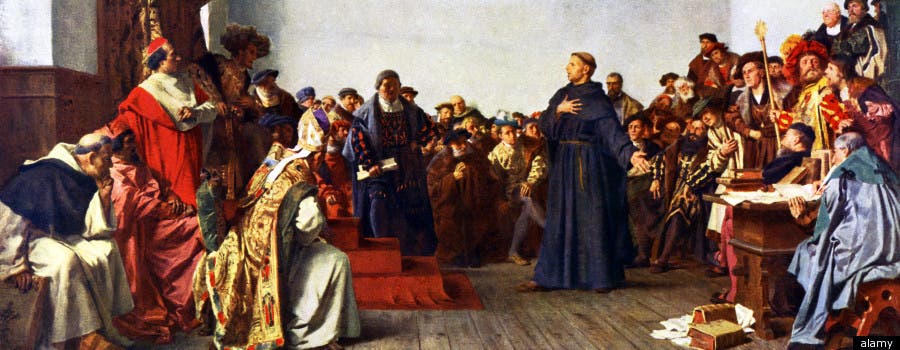Berlin.- Today, October 31, 2024, marks 507 years since Martin Luther nailed his 95 theses against the sale of indulgences on the door of the church in Wittenberg (Germany), the origin of the Protestant Reformation and various churches with millions of faithful.
Luther’s initial intention, according to the current consensus among historians, was not to generate a schism within Christianity, but to reform the Catholic Church and the practices he considered corrupt from within.
The core of his argument against the sale of indulgences was that salvation was achieved by grace, not works, so paying money to the Church for the forgiveness of sins made no sense.
That is, no one is saved by themselves, but by the will of God, and the only thing that remains for human beings is, with humility and without overvaluing their own merits, to try to be worthy of divine grace day by day.
The second pillar of Lutheran theology was the direct reading of the Bible, whose message Luther opposed in many aspects to the official Catholic doctrine and, above all, to the behavior of many clerics.
The Church, furthermore, in his opinion, did not have a monopoly on the interpretation of the Bible, but rather each believer had to confront it. Another key element, especially in practice, was the abolition of celibacy, which generated a new type of family in the homes of Protestant pastors.
Luther’s theses were a stimulus to other reformers elsewhere in Europe, who added new elements to a movement that would break the unity of Christianity in Western Europe.
The founding of new churches sometimes responded to fundamentally theological reasons, as in the case of Calvin in Switzerland, or above all political, as happened with Henry VIII in England with the Anglican Church.
In Germany, the cradle of the Reformation, the largest Protestant organization is the Evangelical Church, which is actually a federation of 20 different churches, some Lutheran and some Calvinist, with 24 million followers.
At an international level, the Lutheran World Federation stands out, to which 145 churches and 74 million faithful belong and which next Monday will commemorate in Sweden the 500 years of the schism together with Pope Francis.
However, the religious freedom on which the Protestant Reformation is based means that, along with these large organizations, many small churches coexist in various parts of the world.
Affiliated or not with larger entities, they always maintain doctrinal and theological independence in accordance with what Luther called in one of his best-known writings “the freedom of the Christian.”
This means that within Protestantism there are both extremely conservative and even fundamentalist currents, as is frequently seen in some churches in the US and Latin America, and other highly progressive ones.
In any case, the flexibility of their structures has allowed Protestants to advance in many aspects more quickly than Catholics, as in the case of the female priesthood.
*This story was originally published on October 31, 2016


















